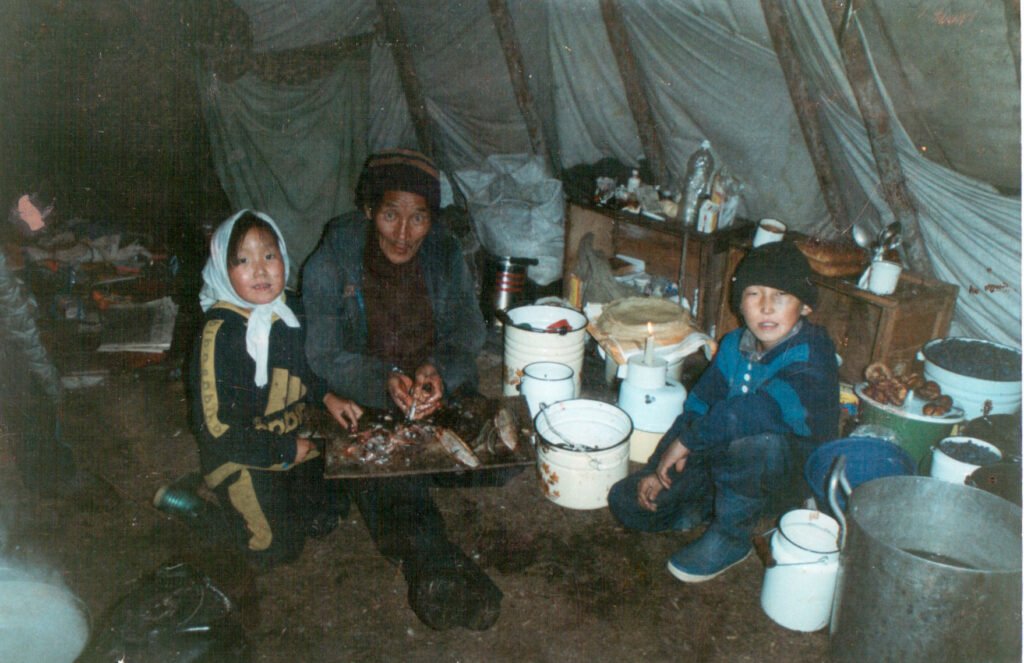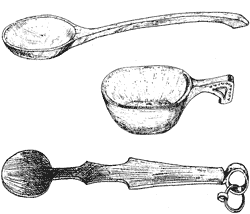BIRCH AND WOOD PRODUCTS
Будучи жителями тайги, эвенки широко пользовались деревом и берестой. Из бересты они делали легкую и удобную посуду, коробки, колыбели, покрышки для чумов. Наиболее распространенными были коробки овальной формы хагачан, квадратные или плоские сосуды прямоугольной формы чуман, и туес – высокий сосуд для теста и продуктов. Обычно берестяные изделия не украшались, но встречаются коробки, украшенные геометрическим орнаментом или схематическим изображением животного и растительного мира, нанесенные способом тиснения или расписанные красками.
Из дерева вырезали чумашки – мелкие долбленые чашки, ложки, ящички для хранения посуды, курительные трубки, календари, коробки для женского рукоделия, а также предметы для ритуальных обрядов шамана – условно обработанные фигурки рыб, птиц, животных и антропоморфных духов. Наибольший интерес представляютабсэ(авса) – коробки для хранения предметов женского рукоделия. Деревянную доску сворачивают в круглый или овальный цилиндр, прошитый кожаными ремешками, а дно делают из толстой лосиной ровдуги или вырезают из дерева и прикрепляют деревянными гвоздями. Стенки коробки и крышка окрашиваются черной краской и украшаются резным линейным орнаментом. При переездах коробки возят в чехле из ровдуги, украшенном бисером.
METAL PRODUCTS
Artistic metalworking among the Evenks did not receive wide development, although even before the arrival of the Russians, the Evenki blacksmiths made objects of a utilitarian nature from copper, iron and silver. They knew methods of casting, forging, engraving and inlaying.
The range of art items made of metal was small: copper masks, tweezers, bronze pendants for clothes, tin and lead buckles. Tin cast buckles for decorating caftans and bibs, in most cases, have the shape of a disc with uniform projections along the edges. In the center of the discs, motifs of the sun are engraved in the form of a rosette with rays around, or cruciform motives of the ornament.
BONE AND HORN PRODUCTS
A deer horn, less often a mammoth tusk, was used to make plates for reindeer headpieces, bag saddle arches. Bone arcuate plates were hung from baby cradles as a talisman. The surface of these objects was decorated with an engraved ornament, which clearly stood out against the light background of the bone, thanks to the rubbing of black or red-brown paint in the line of the drawing. The geometric ornament consists of a combination of various lines, triangles, rectangles, zigzags, chevrons and spurs. The composition of the ornament is determined by the shape of the object. In addition to geometric ornamentation, there are schematized figurines of humans, birds, and deer on the bone plates of a deer headpiece.


